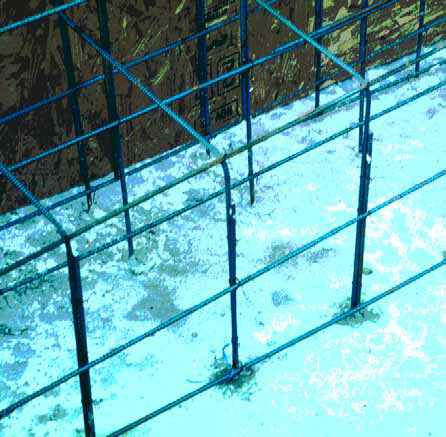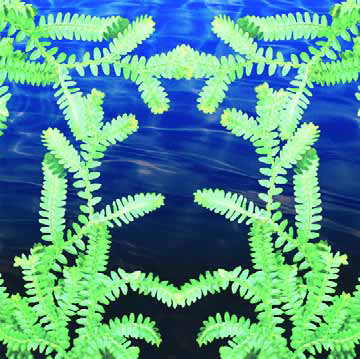ARTICLES
Advance Search
Aquatic Health
Aquatic Health, Fitness & Safety
Around the Internet
Aquatic Culture
Aquatic Technology
Artful Endeavors
Celebrity Corner
Life Aquatic
Must-See Watershapes
People with Cameras
Watershapes in the Headlines
Art/Architectural History
Book & Media Reviews
Commentaries, Interviews & Profiles
Concrete Science
Environment
Fountains
Geotechnical
Join the Dialogue
Landscape, Plants, Hardscape & Decks
Lighter Side
Ripples
Test Your Knowledge
The Aquatic Quiz
Other Waterfeatures (from birdbaths to lakes)
Outdoor Living, Fire Features, Amenities & Lighting
Plants
Ponds, Streams & Waterfalls
Pools & Spas
Professional Watershaping
Structures (Editor's Notes)
Travelogues & History
Water Chemistry
WaterShapes TV
WaterShapes World Blog
Web Links
Around the Internet
Aquatic Culture
Aquatic Technology
Artful Endeavors
Celebrity Corner
Life Aquatic
Must-See Watershapes
People with Cameras
Watershapes in the Headlines
One of the keys to designing effective spaces for human occupation is to create opportunities for movement from one place to another. This component of mobility adds functionality and utility to just about all spaces while keeping them vital and interesting. In watershape design, we have several options when it comes to introducing mobility to our work, including pathways and bridges that lead to
Even with the broad variations among basic types of watershapes - pools, spas, streams, ponds, waterfalls or fountains - they are all unified by the simple fact that every project must first be
The watergardening business has exploded in North America in the past few years - so much so that it's easily the fastest-growing segment of the watershaping industry. This wave of interest in naturalistic watershapes means that hundreds of people new to the craft of pond and stream building are now out there, working on all sorts of residential and even a few commercial projects. Some of these are landscape contractors working with water in a significant way for the very first time. Others are pool contractors who've
It was one of those projects that demonstrate just how beautiful and exciting swimming pools and spas can be. The clients started by asking for something unique that would make creative use of lighting, hydraulics and sound - something that would maximize and extend the modern styling of their home while making the most of spectacular views available along the shore at Westhampton Beach, N.Y. Their confidence in our capabilities and creativity set the tone for the entire project and let us step well beyond the ordinary in our thought processes. This trust was
People don't usually have trouble with boundaries and will honor requests to "Keep Out," for example, or leave certain doors to "Employees Only." But there are also cases where we generally take issue with limitations on behavior whether stated or implied, and I can think of no better instance in which this takes place than with water in public spaces. Despite designers' best efforts over the years to make it clear where bathers are welcome and where they are not, the public has steadily defied boundaries by trespassing into waters that were never directly designed for human interaction. In fact, you might say that formal, decorative fountains are a forbidden fruit from which many of us have taken the occasional bite. During the past two decades, watershape designers have looked very specifically at the irresistible urge we have to touch water in an effort to shape all-new boundaries between public nuisance and design nuance. Along the way, we've learned which elements offer a deliberate, positive signal - a real "permission to play" - and are now wielding this power of interactivity to create and define a broad range of
William Rowley & Scott Mackey It's one of those places you really have to see to believe. Part indoor waterpark and part competition facility, the Sierra Vista Aquatic Center is owned by the town of Sierra Vista, Ariz., a desert community of approximately 35,000 retirees and military families located near the sprawling Fort Huachuca army base. That's about 50 miles south of Tucson - and about as remote as a town can get. Known locally as "The Cove," the aquatic facility represents the town's commitment to its citizens' quality of life and a nod to the potential recreational water has to transform a community. From start to finish, the project took about four years and cost about $6.7 million, all paid for by the city. Designed by Tucson architect Scott Rumel, the basic facility was built by Lloyd Construction under the management of construction supervisor Leon Davis. Tucson pool builder Mark Ragel of Patio Pools set up the various watershapes, while our firm, Rowley International Inc. of Palos Verdes Estates, Calif., took care of the aquatic design and engineering. The facility opened in
Books dedicated specifically to swimming pools are of immediate and obvious utility to a great many watershapers. I've found valuable ideas from such publications through the years - despite the fact that much of the time their content is aimed at consumers rather than professionals. One thing that has disappointed me in many of these pool-focused publications is that the pool industry itself is not very well represented. Instead, what you usually see is the work of landscape architects, architects and other designers. In many cases their work is beautiful and deserving of attention, but the general exclusion of the work of
Of all the things I've learned in my work as a watershape designer and builder, one particular point stands out: When it comes to ensuring quality results and a project's success, there's absolutely no substitute for good supervision! I say this knowing that most job sites run by people in the pool industry are inadequately supervised if they're supervised at all. Yet experience shows, time and time again, that while complete, professional plans are part of success and that great subcontractors are essential, constant oversight is the absolute
Very often when I'm selecting a plant palette with a client, I'll hear the words, "I hate ferns." I'm not sure what it is about these botanical beauties that evokes such a visceral reaction from people - except maybe that they were overused in floral arrangements during the 1970s and 1980s? I'm not sure what's going on here, and if any of you know a soild reason for this dismissal, please educate me! For my purposes, ferns are one of the most versatile plants available. They typically prefer
What makes for a great natural-style watershape? That's a huge question - one which a great many people have devoted their careers to exploring and for which almost every one of us will have a slightly different answer. As you will see here, my own response to the question starts with even more questions about the site, my clients and the surrounding structures and vegetation - questions I ask myself as I approach each individual design assignment and decide how far






















